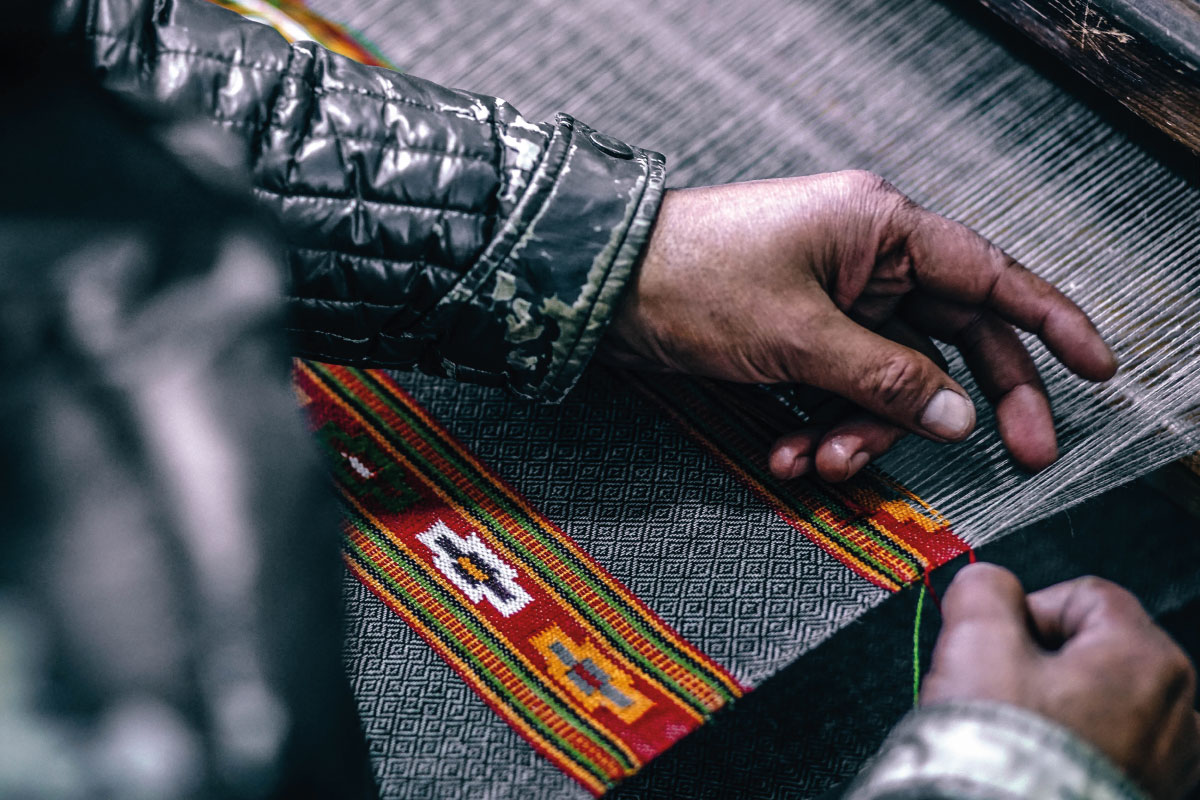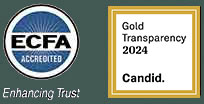Planting multiethnic churches is a complex and challenging reality in whatever culture of the earth we might find ourselves. Planting them in the North American context has its own unique challenges and opportunities.
I am aware that there are many who advocate reaching people using what is known to missiologists as the homogeneous unit principle, or HUP. This principle says that it is most effective to reach people evangelistically “in their own tribe.” In some contexts, there is great merit to this as you need to speak the same language and share some cultural foundations in order to connect and communicate the gospel of Jesus Christ. Additionally, there are times when mono-ethnic churches make sense for various reasons. Freedom to express community identity apart from the hegemony of a dominant culture, and first generation immigrant communities come to mind.
However, in many places on the earth, cultures are living in close proximity to one another with people of various ethnic and social backgrounds in the same cities. This is not unlike many of the places in the first century where the gospel took root. So in this essay I have no interest in debating the HUP as it pertains to North American church planting. I am writing for those who have a similar conviction, calling and passion for planting multiethnic and transcultural churches.
We have the opportunity to live out the transcultural nature of Christ’s gospel which creates one new people.
In our North American cultural narrative we have deep roots of racial bigotry, systemic oppression and cultural suspicions between various peoples. We also have the opportunity to live out, together, the transcultural nature of the gospel of Jesus Christ which creates one new people out of the peoples of the earth. So in desiring to plant churches, my heart and passion was always to plant a multiethnic church where the beauty of gospel reconciliation, justice, love and unity might show off the glory of Jesus Christ.
So here are my assumptions: first, you have an interest in planting and shaping transcultural and multiethnic core groups for church planting. By multiethnic I simply mean a diversity of peoples working together in gospel life and mission. By transcultural I mean working to give and receive with one another so that no one must deny their unique cultural flavor. We each give and give ground to create something culturally new and together under one King. My friend, Pastor Lèonce B. Crump Jr., gives a very helpful definition for the transcultural nature of the church:
Every human being is endued with the imago Dei, the image of God, captured in unique cultural and ethnic expressions which embody the full breadth of God’s creative genius, not to be subverted by the ethnic/cultural identity and preferences of another, but celebrated in creating a fuller expression of our humanity, a woven tapestry of color, culture, and class as God forms a people for Himself from all people.
Leonce Crump, Renovate: Changing Who You Are by Loving Where You Are (Multnomah, 2016) 112.
Second, as a white guy, I cannot help but write from a particular cultural viewpoint in North America. My only hope is to offer counsel as one who has planted a church with these aims and practices. I have also continually submitted my ideas, bias and perspective to others whom I respect in order to grow in empathy and servant leadership.
I do offer this one caveat as I begin. You may be planting in an all Chinese neighborhood, or an all-white cornfield town, or a section of a city that is majority African-American. I get that. Yet to be transcultural means we also look within race/ethne to live together across economic status, caste, life station and world assigned place. Furthermore, with the density and close proximity of many areas, I still recommend transcultural church planting — from day one in the core team.
What follows is a short collection of principles that I think are crucial for building multi-ethnic core teams for the planting of the gospel in new communities. These are ideas which come from Scripture, wisdom and our experience in planting a multi-ethnic, transcultural congregation in Central New Jersey.
Ground your praxis in the transcultural theology of the Bible
Our destiny is to display & declare God’s glory in all our panoramic, diverse beauty as humanity made in God’s image.
The purpose of Old Testament Israel was to be a light to the nations, so that God’s glory would spread throughout all the earth and so that the covenant people would include many peoples (Isaiah 49:1-6). The fulfillment of this promise arrives in Jesus the Messiah creating one new man out of Jew and Gentile, which we read about in Ephesians chapter 2. The great vision in the book of Revelation is that in the Kingdom of God there will be some from every tribe and tongue of people on the earth (Revelation 7:9-12). This is to be accomplished by God sending his people to make disciples of all nations/ethne/peoples (Matthew 28:18-20). God’s mission is, therefore, inclusive, and our destiny is to be a people who are a worshiping community displaying and declaring the glory of God together in all of our panoramic, diverse beauty as humanity made in the image of God.
We should ground this transcultural ministry philosophy in the gospel, not in cultural guilt, paternalism, social theory or various philosophical views of race. We certainly have to take all of these into account as they relate to our own background and experience, but we ground our conviction in the Scripture, the grand story of Jesus Christ. Years ago, I heard my friend John Bryson, from Fellowship Bible Church in Memphis, talk about all of the secondary things we will inevitably address when we seek to be a multiethnic community of faith. We seek to be a multiethnic community because it is a Biblical conviction, but in doing so we also go after consumerism, preference, privilege and all sorts of concerns in discipleship. These are healthy discipleship byproducts of the goal of following the crucified King in his vision to create a transcultural people.
Ground your practice in a robustly theological reading of the Bible. It will help sustain you and give a clear apologetic for your practice as you answer any detractors.
Make it a nonnegotiable
In order to plant this way, it must be a nonnegotiable for you — I even suggest making this a condition for launch. Cultural momentum is real and it’s difficult to overcome once you begin. Probably the most important thing about your church plant is its culture. I used the term flow at Jacob’s Well in New Jersey. Your flow is the sum total of all things pertaining to your way of life and being. It encompasses many things, both said and unsaid that are felt and experienced by the community. What your flow is like if you start out as an all Asian church matters, particularly if you are hoping to be a multiethnic church. If you start out as an all white church, you will have massive momentum in an unstated, thick and often assumed cultural direction. With this vision for your church plant, it must be a nonnegotiable from the beginning. It must and cannot get quickly overwhelmed by other “pragmatic” concerns and opposition.
Specifically seek out partners who share your passion.
Church planter, you must seek out like-minded partners for the work of planting a multiethnic church.
The mission of the gospel is not an individualistic enterprise. The Lord always calls together a community to fulfill and live out his purposes. This is particularly important as you seek to plant a multiethnic church. This is a mission and vision that must be shared and held in common by leaders of different backgrounds. If you are a church planter you must pray and specifically seek out like-minded partners for the work. Please remember, this should be intentional but not paternalistic. Tokenism, or just desiring people of different skin pigments on the bus, is an actual offense to God’s transcultural vision for the church. Your hope and prayer is to do life and mission together, not to simply exist under your cultural vision, habits, biases and preferences. Pray desperate prayers in this direction.
I will never forget meeting my friend Manoj Thomas at a prayer meeting for campus ministers at Rutgers University in 2008. My wife and I had not even moved to the state of New Jersey, but I was there meeting people, praying and seeking God for insight into the context of our church plant. Manoj was a volunteer with a campus ministry while doing his very full-time work with a large software company. During the meeting, he read from Revelation 7, asking why all these groups had to be separate and why a group on campus couldn’t be intentionally inclusive of black, Chinese, Asian Indian, Latino and white. He got on his soapbox a bit, and later had to leave the meeting early to get to work. Sensing the Lord’s Spirit leading, I literally followed him to the parking lot and said to him point-blank, “I would love to do that with you. I have brochures in my bag about a dream to plant a church community on mission that desires what you were talking about in there. Would you pray about doing that with me?”
Obviously, both he and I had only minimal first impressions of one another from being in the meeting together. We both took a risk and the rest, as they say, is history. The Thomas family was the first family from New Jersey involved with our plant. The Lord had a family with roots from Ireland and another with roots from India together for the gospel. We prayed that God would would send people to help from various backgrounds before we launched anything public in terms of our ministry. Our goal to become indigenous and multiethnic before launching any public gatherings of the church was key, because we wanted a different cultural DNA and momentum from the beginning. To plant multiethnic you must be committed to this vision and avoid the panic of desperation for just having warm bodies in the room to help the plant. Pray for the Lord to send the right partners in the gospel, particularly those from a different background than you. This means that the planter must spend time with different people when planting the church. Some men do not have the skills, experience or perseverance to do this well. So if, in the current stage of your journey, you’re not comfortable in cross cultural settings and do not sacrificially love and serve among people, this kind of work and church planting may not be for you. Start by authentically getting to know people and sharing one another’s experiences. Perhaps in the future you’ll be ready and equipped to plant this kind of work.
Evolving culture/flow forward
Once a church plant does launch and Christ’s mission is being lived together, there are some specific and practical things that can help you maintain and focus on the call to be a transcultural community. These are hyper-practical principles and practices that we found helpful in our work.
First, I counsel you to absolutely avoid children’s curriculum that is not representational in its illustrations. Having a curriculum that is mono-racial in it’s presentation visually is not inclusive nor helpful in this work. Thankfully many publishers are more conscious of these things today, but much Christian literature in the west is still lily white. Certainly jettison those white boy Jesus illustrations; they are neither helpful nor historically accurate.
Second, we had the internal legalism that our platform would never be mono-ethnic on Sunday. Between our host, our preacher and our band members, there should never be a singular vision up front. We sought real diversity in cultural background, ethnicity, age and gender. This ought to affect your band tryouts and who are trained to be upfront hosts and speakers. We actually had a complaint that this seemed like affirmative action. My reply was that we were committed to leading this congregation together; our aim was not simply to have a talent show.
Third, when you have videos that are promotional or story oriented, you want to be wise and intentional in your representation.
Fourth, be aware of seasons and holidays and celebrate. Even a casual mention of Bollywood films launching during Diwali in a sermon can display a cultural alertness to other people’s yearly rhythms. Our church also intentionally celebrated Black history month in February. During the month, I would do personal research and study on an historical figure who was a follower of Jesus and African-American. Each person in our church would get a copy of the short biography I would write to read and reflect upon and learn from saints who had gone before us. You can find a few of those online here.
If you’re not reaching out to, developing & empowering those different than you, you may only be engaged in tokenism
Fifth, affirm and establish a diverse plurality of leaders. If you are not reaching out to, developing and empowering those different than you, you may only be engaged in tokenism and how things look rather than submitting to one another in love. In a North American context, this means that white guys need to intentionally choose to follow and submit to people that are different than us. We are not trying to create ethnic factions with representations in leadership, but rather leading together as we become one people. This cannot be done alone and without leadership.
Sixth, have open conversations with one another without it being a program. However, if you didn’t start out this way you may have to create a program to get people to talk. Seek out mentors to help you avoid being foolish and hurtful to people in your ignorance. We will all make mistakes with each other culturally, but at least try to not be a complete idiot related to other people and cultures. A culture of forgiveness and grace goes a long way as well, so model being a good cultural learner and one who asks for forgiveness for his blunders and mistakes. As just one example, I would never post this without having it peer reviewed by trusted friends from other cultural backgrounds. Their influence is found in this essay and it is all the better for it.
Seventh, the lead pastor(s) must be all in. Period. If you are seeking to plant or become a multiethnic, transcultural community and the lead guy is not all in, you are asking for pain and frustration in the future for all. The leaders of your church must be unified in this commitment to love and live this way. You must absolutely have each other’s back in these matters, particularly when things get difficult. Which brings us to our eighth and final principle.
Eighth, you need to persevere and be ready for the struggle. You must be ready for the opposition that will come as you address specific injustice, racism, prejudice, consumerism and cultural protectionism. You should expect racially insensitive, racially ignorant, and out-right racist things to be said at times. Even with planting this way from the start, there will be those who will desire to go only so far in their own transformation of their perspectives. Be prepared to have people even leave your church community over discourse related to transcultural ministry. The bottom line is that planting this way can be slower, harder and more financially difficult; please count the costs.
Rejoice, enjoy and celebrate
Finally, the Lord has such a blessing in store for people who begin to love and serve, crawling across boundaries that are maintained with such vigilance in the world. I cannot tell you how I have benefited from the experiences, theological insight, wisdom, wit and sense of humor of people from different backgrounds. We begin to see our common humanity and paternity under God our Father, and rejoice in our similarities as well as our diversity. And brothers and sisters, how about the wonderful feast of friendship, fellowship and food! I will never forget our first international lunch at Jacob’s Well. A few people thought it was a meeting to promote missions. Yes, we did have a display on hand of our various global partnerships, but the true purpose of the event was to have a party. A party where Indian, Chinese, Cuban, Puerto Rican, Soul food and African fare was on hand. People cooked for one another and came dressed in their typical fashion from their home culture. It was a wonderful day. To be honest, some southern style barbecue ribs made by my Chinese American brother Vince was the best thing I ate that day. My mom and dad both grew up in Memphis, TN so I have strong opinions on what good ribs actually are. My brother even cooks barbeque on a competitive team. So to see my Chinese brother absolutely nail something wonderful from my own background and culture brought a smile to my face. The time of fellowship, of sharing life in common, was so rich. I even believe it may just have brought a smile to our Lord as well.
Summary
In summary, to focus on planting transcultural churches we must:
- Make it a personal, theological conviction
- Make it a nonnegotiable in order to persevere
- Start this way
- Lead together
- Submit to one another
- Rejoice in the King of kings and Lord of lords, who made all the peoples of the earth and is calling some from every tribe to be a kingdom of priests to declare his glory among the nations forever and ever amen.
May the Lord give us his grace as he builds his church out of the peoples of this world. And if you have the joy and privilege of being one new people together on earth as it will be in heaven; rejoice all the more!
Resources for Multiethnic and Transcultural Leadership
Note: Each of these works and authors brings a particular perspective, terminology and approach to ministry. Read them for their unique perspective and help as you humbly learn and hope for ministry in a new way.
- Divided by Faith, by Michael O. Emerson and Christian Smith
- United by Faith: The Multiracial Congregation as an Answer to the Problem of Race, by Curtiss Paul DeYoung, Michael O. Emerson, George Yancey, Karen Chai Kim
- The High Definition Leader: Building Multiethnic Churches in a Multiethnic World, by Derwin Gray
- Renovate: Changing Who You Are by Loving Where You Are, by Leonce Crump
- Building a Healthy Multi-Ethnic Church, by Mark DeYmaz








